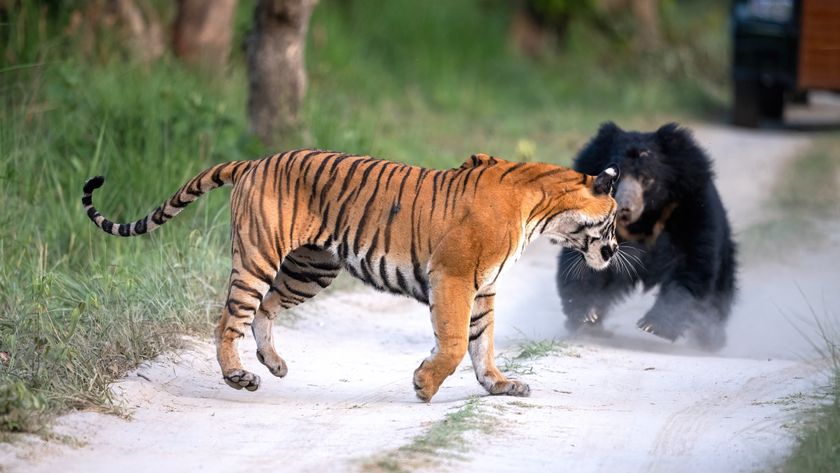
Last Stronghold of Endangered Tigers Identified
Scientists have identified the last strongholds for tigers — 42 sites scattered across Asia where the species' roughly 1,000 remaining breeding females could potentially restore populations of the endangered big cats.
The number of wild tigers has never been lower. Fewer than 3,500 tigers remain in the wild, and they are now clustered in less than 7 percent of the roughly 580,000 square miles (1.5 million square kilometers) of suitable habitat remaining for them in Asia. This dire situation is the result of overhunting, habitat loss and the wildlife trade. The demand for tiger body parts used in traditional medicines is driving most of the decline.
"The tiger is facing its last stand as a species," said John Robinson, the Wildlife Conservation Society's executive vice president for conservation and science.
The newly identified tiger strongholds currently hold nearly 70 percent of the world's remaining wild tigers.
"The team brought together probably all the people working with tigers in the various range states — the 13 countries where tigers have historically occurred — and identified the areas where there were significant populations of tigers, and provided estimates of tiger population densities within those areas," Robinson explained. "In some cases, those estimates were based on censuses of tigers, and in some other cases they were based on censuses of prey animals — there's a very tight correlation between the number of prey and tiger populations."
Researchers suggest these areas, which altogether encompass about 35,000 square miles (90,000 square kilometers) — less than a half-percent of the species' historical range — offer the last hope and prime concern for the conservation and recovery of the world's largest cat.
"While the scale of the challenge is enormous, the complexity of effective implementation is not," said researcher Joe Walston, director of the Wildlife Conservation Society's Asia program. "In the past, overly ambitious and complicated conservation efforts have failed to do the basics — prevent the hunting of tigers and their prey."
Sign up for the Live Science daily newsletter now
Get the world’s most fascinating discoveries delivered straight to your inbox.
With so many of the remaining tigers clustered in a small area, Walston said "efforts need to focus on securing these sites as the number one priority for the species."
Each of these sites is able to maintain more than 25 breeding females and is located within a larger region that has the potential to support more than 50 breeding females. They are also located in areas that already possess conservation infrastructures and legal mandates for tiger protection.
Eighteen of these sites are in India, holding roughly 1,000 tigers, which the researchers said made India the most important country for the species. Sumatra held another eight, while the Russian Far East contained six. There is no longer any evidence of breeding populations of tigers in Cambodia, China, Vietnam and North Korea.
The scientists calculated the total required annual cost of effectively managing these strongholds at $82 million, which included the cost of law enforcement, wildlife monitoring, getting the community involved in their protection and other factors. Although that might seem a large price tag, $47 million of that is already provided by the governments of the areas where the sites are located, supplemented by international support, the researchers said. The $35 million shortfall is needed to intensify proven methods of protection and monitoring.
"$35 million is less than what [New York Yankees baseball player] Alex Rodriguez made last year in salary and endorsements," Robinson told Our Amazing Planet. "There's quite a bit of money floating into protected areas at this time — the shortfall is not huge." Robinson noted he was recently in talks in Washington, D.C., with representatives of some multilateral government agencies to talk about this funding for tigers.
The researchers detailed their findings online Sept. 14 in the journal PLoS Biology.
- 10 Species You Can Kiss Goodbye
- Rare Siberian Tigers to Get Haven on Chinese-Russian Border
- In Images: The Wild Cats of Kruger National Park
This article was provided by OurAmazingPlanet, a sister site to LiveScience.













